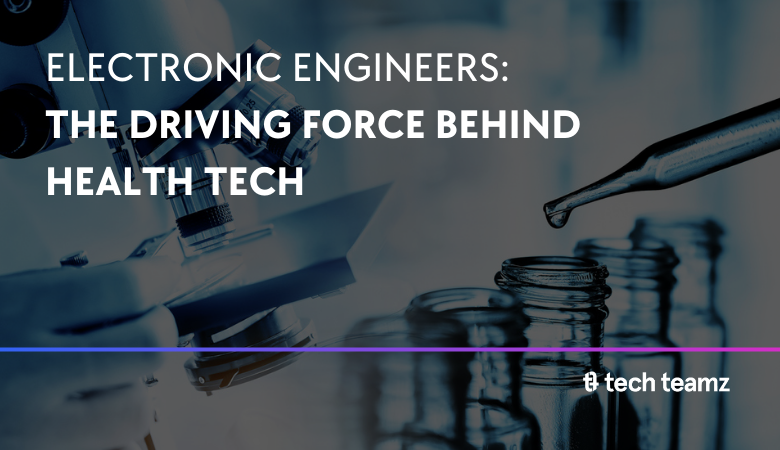Every day, engineers and scientists tirelessly work to develop medical electronics that enhance healthcare and change the way we understand and treat diseases.
From remote monitoring devices to smart implants and state-of-the-art diagnostic equipment, medical electronics are constantly evolving, offering unprecedented hope and possibilities. Companies like Pfizer and Farmaindustria are behind the progress of the healthcare industry.
Let’s explore some of the most exciting innovations in this field and their potential impact on modern medicine.
Related article: Electronic Engineers In The Healthcare Industry
Telemedicine and Remote Monitoring
Telemedicine platforms have bridged geographical gaps, allowing patients to consult with healthcare providers remotely. Through video calls, chat, or phone, patients can receive medical advice, prescriptions, and follow-up care without leaving their homes. Remote monitoring devices, such as wearable sensors and smart home health systems, enable continuous tracking of vital signs, medication adherence, and disease progression.
Examples:
- Continuous glucose monitors (CGMs) provide real-time blood sugar data for diabetic patients, enabling timely adjustments to insulin doses.
- Cardiac monitors alert healthcare professionals to irregular heart rhythms, preventing adverse events.
- Smart inhalers track asthma medication usage and offer personalized reminders.
Artificial Intelligence (AI) and medical electronics
AI algorithms analyze medical images with high precision, helping radiologists detect abnormalities early. AI-based treatment recommendations take into account patient history, genetics, and clinical guidelines.
Examples:
- Google’s DeepMind developed an AI model that detects diabetic retinopathy from retinal scans, potentially preventing blindness.
- PathAI uses AI to assist pathologists in diagnosing cancer from tissue samples.
- IBM Watson for Oncology suggests personalized cancer treatment options based on extensive medical literature.
Precision medicine and genomics
Advancements in genomics allow tailoring treatments to an individual’s genetic composition. Personalized medicine minimizes adverse effects and maximizes treatment efficacy.
Examples:
- Warfarin, an anticoagulant, has different dosages based on genetic variations affecting metabolism.
- Herceptin, used for breast cancer, targets specific genetic markers.
Robotics and Automation
- Surgical robots assist surgeons in complex procedures, improving precision and minimizing invasiveness. The Da Vinci Surgical System is widely used for prostate, gynecological, and cardiac surgeries.
- Pharmacy robots automate medication dispensing, reducing errors and freeing up pharmacists’ time.
- Robotic exoskeletons aid in the rehabilitation of patients with mobility issues.
Behavioral health apps and Virtual Reality (VR)
Mobile apps address mental health challenges by offering cognitive-behavioral therapy (CBT), meditation, and stress management tools. Virtual reality-based exposure therapy helps patients overcome phobias, post-traumatic stress disorder, and anxiety.
Example:
- Limbitless Solutions uses virtual reality to distract pediatric patients during painful procedures.
Related content: The Growing Demand for AI and ML Engineers in the Technology Industry
Opportunities and challenges in the medical electronics field
Healthcare engineering lies at the intersection of technology, medicine, and innovation. Looking to the future, this field presents both opportunities and challenges. Let’s delve into the nuances of the future of healthcare engineering.
Personalized medicine and precision healthcare.
Opportunity: Advances in genomics, proteomics, and data analytics enable personalized medicine. Tailoring treatments to an individual’s genetic composition promises better outcomes and fewer side effects.
Challenge: Implementing personalized medicine at scale requires robust infrastructure, secure data exchange, and ethical considerations.
Telehealth and remote monitoring
Opportunity: Telehealth has gained prominence, especially during the pandemic. Remote consultations, wearable devices, and telemonitoring improve patient access and reduce healthcare costs.
Challenge: Ensuring equitable access to telehealth services, addressing connectivity gaps, and maintaining patient trust are critical challenges.
Integration of medical devices and IoT
Opportunity: Internet of Things (IoT) devices can track vital signs, medication adherence, and lifestyle factors. Wearable devices, smart implants, and connected medical equipment enhance diagnosis and treatment.
Challenge: Interoperability standards, cybersecurity, and regulatory compliance are obstacles. Emerging companies must navigate complex certification processes.
In conclusion, the transformative impact of electronic engineering in healthcare is undeniable. The innovations presented open new doors to a future where personalized medicine, telemedicine, and the integration of medical devices drive efficiency and quality in healthcare. At TechTeamz, we recognize the importance of this advancement and are proud to state that the field of medical devices is one of our priority areas of work. We have a team of dedicated expert engineers focused on developing innovative solutions that drive progress in this field


